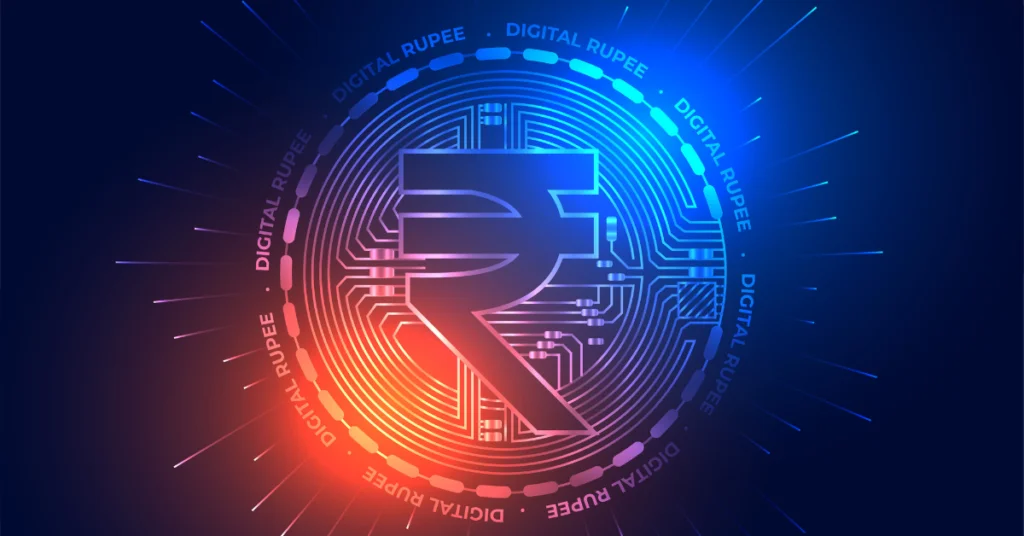India’s digital rupee has the potential to significantly impact the finance world by bringing financial services to more people, increasing the speed and efficiency of transactions, exploring CBDC for cross-border payments, and reducing the cost of financial services.
RBI has launched the pilot version of India’s central bank digital currency (CBDC) Digital rupee for both wholesale and retail segments.
In the wholesale segment, the use of the Digital Rupee is limited to the settlement of secondary market transactions in government securities, as mentioned by RBI.
And in the retail segment, the testing has begun with the closed user group (CUG) which involves customers and merchants.
Here are some key factors to anticipate the changes the digital rupee could bring to revolutionize India’s financial sector.
Financial Inclusion
India’s digital rupee can increase financial inclusion, especially for people who do not have bank accounts or do not have access to traditional banking systems.
It will allow such people to participate in the formal economy.
Digital Rupee/e-rupee has the potential to reach a large number of people who have limited access to banking services.
Here’s a demo of the Digital Rupee transaction given by Anand Mahindra.
Faster and More Efficient Transactions
Digital Rupee allows for real-time and near-instant transactions, which can increase the speed and efficiency of financial transactions, and reduce the need for intermediaries.
Digital rupee transactions would be much faster and more efficient than traditional cash transactions.
Digital Rupee transaction is much easier than online banking. Here’s a step-by-step guide to do transactions in Digital Rupee.
Cost Savings
Digital Rupee can help reduce the cost of financial services by eliminating the need for physical infrastructure.
It could help reduce the costs associated with handling physical currency; such as printing, transportation, storage, and distribution.
Improved Security
Digital Rupee can improve the security of financial transactions by reducing the risk of fraud and counterfeiting.
It uses blockchain technology which ensures the transaction gets recorded in real-time on a secure and tamper-proof ledger.
A digital rupee would make it more difficult to engage in fraudulent activities and money laundering as all transactions would be recorded and traceable.
Increased Tax Revenues
The use of a digital rupee would make it easier for the government to track transactions and collect taxes.
Increased Competition
By introducing a digital alternative to traditional financial services, India’s digital rupee has the potential to increase competition and innovation in the financial sector, leading to better financial products and services for consumers.
However, there are also some challenges and risks associated with the adoption of a digital rupee – such as cybersecurity risks, privacy concerns, and the need to ensure that everyone has access to the necessary technology to use digital currencies.
It will require careful planning, implementation, and oversight to ensure that it is successful and beneficial for all stakeholders.
Overall, the adoption of a digital rupee could bring significant benefits to India’s finance sector.
Digital Rupee India CBDC (E-Rupee) FAQs
What is Digital Rupee/e-rupee?
Digital Rupee is the central bank digital currency (CBDC) of India. It’s a digital version of a physical rupee (cash and coins).
What is the use of Digital Rupee?
Digital Rupee can be used to purchase items and spend money online by scanning a QR code.
What is the value or cost of the Digital Rupee?
Digital Rupee is equivalent to the physical rupee. It holds exactly a similar value as paper currency.
Where can I buy Digital Rupee in India?
You can buy digital rupees from Indian banks. Currently, RBI has launched the pilot version of the Digital Rupee in which only four banks are involved – State Bank of India, ICICI Bank, Yes Bank, and IDFC First Bank.
Is Digital Rupee India’s Cryptocurrency?
No, Digital Rupee is not India’s cryptocurrency. It is issued and managed by Reserve Bank of India (RBI).
Discover More –

